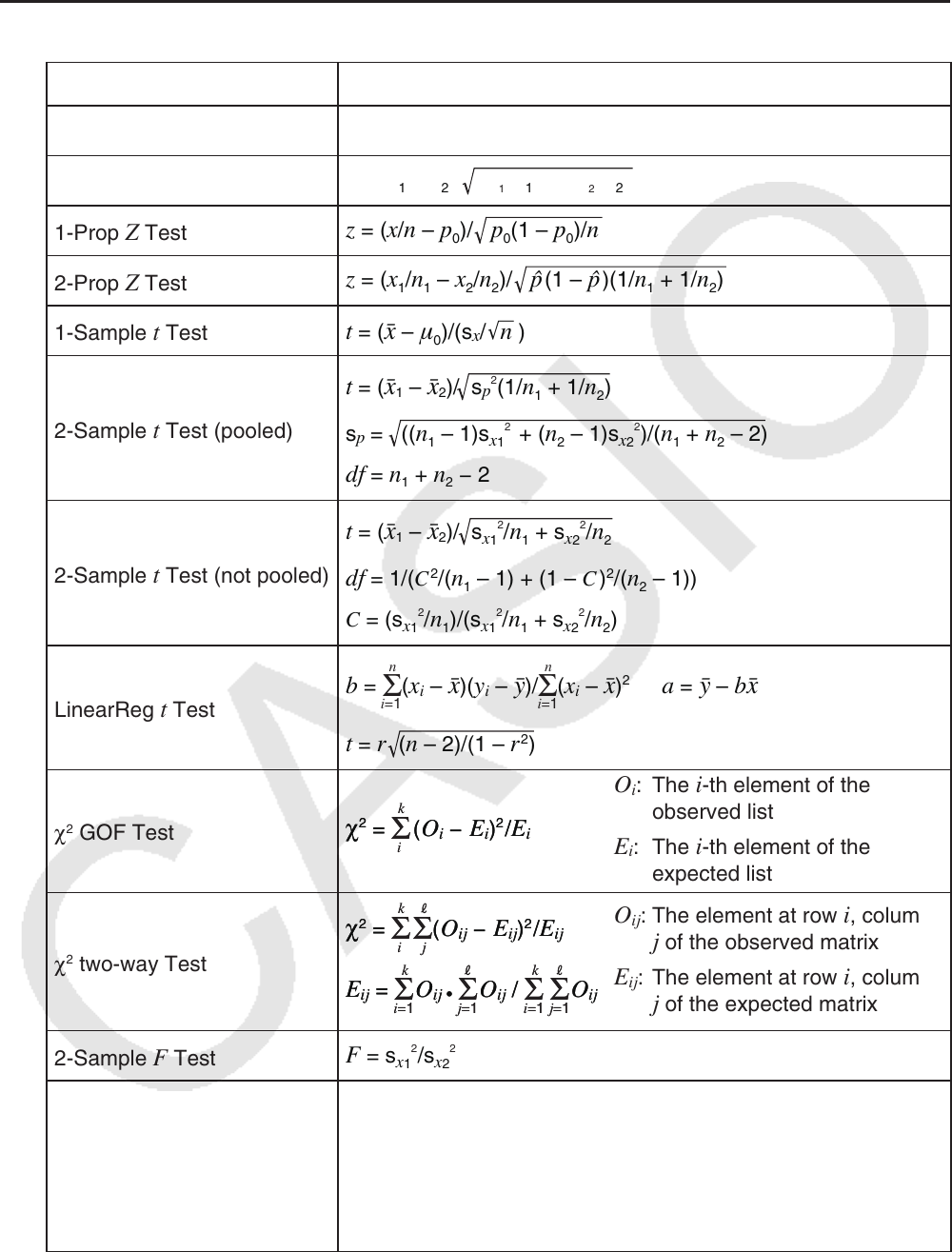User Manual
Table Of Contents
- Contents
- Getting Acquainted — Read This First!
- Chapter 1 Basic Operation
- Chapter 2 Manual Calculations
- 1. Basic Calculations
- 2. Special Functions
- 3. Specifying the Angle Unit and Display Format
- 4. Function Calculations
- 5. Numerical Calculations
- 6. Complex Number Calculations
- 7. Binary, Octal, Decimal, and Hexadecimal Calculations with Integers
- 8. Matrix Calculations
- 9. Vector Calculations
- 10. Metric Conversion Calculations
- Chapter 3 List Function
- Chapter 4 Equation Calculations
- Chapter 5 Graphing
- 1. Sample Graphs
- 2. Controlling What Appears on a Graph Screen
- 3. Drawing a Graph
- 4. Saving and Recalling Graph Screen Contents
- 5. Drawing Two Graphs on the Same Screen
- 6. Manual Graphing
- 7. Using Tables
- 8. Modifying a Graph
- 9. Dynamic Graphing
- 10. Graphing a Recursion Formula
- 11. Graphing a Conic Section
- 12. Drawing Dots, Lines, and Text on the Graph Screen (Sketch)
- 13. Function Analysis
- Chapter 6 Statistical Graphs and Calculations
- 1. Before Performing Statistical Calculations
- 2. Calculating and Graphing Single-Variable Statistical Data
- 3. Calculating and Graphing Paired-Variable Statistical Data (Curve Fitting)
- 4. Performing Statistical Calculations
- 5. Tests
- 6. Confidence Interval
- 7. Distribution
- 8. Input and Output Terms of Tests, Confidence Interval, and Distribution
- 9. Statistic Formula
- Chapter 7 Financial Calculation
- Chapter 8 Programming
- Chapter 9 Spreadsheet
- Chapter 10 eActivity
- Chapter 11 Memory Manager
- Chapter 12 System Manager
- Chapter 13 Data Communication
- Chapter 14 Geometry
- Chapter 15 Picture Plot
- Chapter 16 3D Graph Function
- Appendix
- Examination Mode
- E-CON4 Application (English)
- 1. E-CON4 Mode Overview
- 2. Sampling Screen
- 3. Auto Sensor Detection (CLAB Only)
- 4. Selecting a Sensor
- 5. Configuring the Sampling Setup
- 6. Performing Auto Sensor Calibration and Zero Adjustment
- 7. Using a Custom Probe
- 8. Using Setup Memory
- 9. Starting a Sampling Operation
- 10. Using Sample Data Memory
- 11. Using the Graph Analysis Tools to Graph Data
- 12. Graph Analysis Tool Graph Screen Operations
- 13. Calling E-CON4 Functions from an eActivity

6-69
9. Statistic Formula
k Test
Test
1-Sample
Z Test
z
= (o – μ
0
)/(σ/'n )
2-Sample Z Test
z
= (o
1
– o
2
)/ (σ /n
1
) + (σ /n
2
)
2
1
2
2
1-Prop Z Test
z
= (x/n – p
0
)/ p
0
(1 – p
0
)/n
2-Prop
Z Test
z
= (x
1
/n
1
– x
2
/n
2
)/ pˆ
(1 – pˆ
)(1/n
1
+ 1/n
2
)
1-Sample
t Test
t = (o – μ
0
)/(s
x
/'n )
2-Sample
t Test (pooled)
t = (o
1
– o
2
)/ s
p
2
(1/n
1
+ 1/n
2
)
df = n
1
+ n
2
− 2
s
p
= ((
n
1
– 1)s
x
1
2
+ (n
2
– 1)s
x
2
2
)/(n
1
+ n
2
– 2)
2-Sample
t Test (not pooled)
t = (o
1
– o
2
)/ s
x
1
2
/n
1
+ s
x
2
2
/n
2
C = (s
x
1
2
/n
1
)/(s
x
1
2
/n
1
+ s
x
2
2
/n
2
)
df = 1/(C
2
/(n
1
– 1) + (1 – C)
2
/(n
2
– 1))
LinearReg
t Test
t = r (n – 2)/(1 – r
2
)
b =
Σ
(x
i
– o)(y
i
– p)/
Σ
(x
i
– o)
2
a = p – bo
i=1
n
i=1
n
χ
2
GOF Test
O
i
: The i -th element of the
observed list
E
i
: The i -th element of the
expected list
χ
2
two-way Test
O
ij
: The element at row i , column
j of the observed matrix
E
ij
: The element at row i , column
j of the expected matrix
2-Sample
F Test
F = s
x
1
2
/s
x
2
2
ANOVA Test
F = MS/MSe
SS
=
Σ
n
i
(o
i
− o)
2
MS = SS/Fdf MSe = SSe/Ed
f
i=1
k
Fdf = k − 1 Edf =
Σ
(n
i
– 1)
SSe =
Σ
(n
i
– 1)s
xi
2
i=1
k
i=1
k
χ
2
=
Σ
(O
i
− E
i
)
2
/E
i
i
k
χ
2
=
Σ
(O
i
− E
i
)
2
/E
i
i
k
χ
2
=
ΣΣ
(O
ij
− E
ij
)
2
/E
ij
i
k
j
R
E
ij
=
Σ
O
ij •
Σ
O
ij
/
Σ
Σ
O
i
j
i=1
k
i=1
k
j=1
R
j=1
R
χ
2
=
ΣΣ
(O
ij
− E
ij
)
2
/E
ij
i
k
j
R
E
ij
=
Σ
O
ij •
Σ
O
ij
/
Σ
Σ
O
i
j
i=1
k
i=1
k
j=1
R
j=1
R










